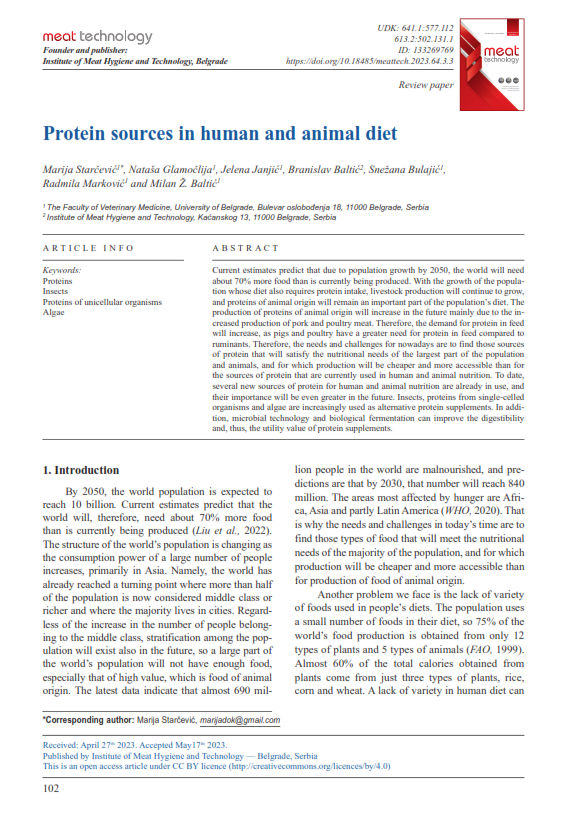Protein sources in human and animal diet
Abstract
Current estimates predict that due to population growth by 2050, the world will need about 70% more food than is currently being produced. With the growth of the population whose diet also requires protein intake, livestock production
will continue to grow, and proteins of animal origin will remain an important part of the population’s diet. The production of proteins of animal origin will increase in the future mainly due to the increased production of pork and poultry
meat. Therefore, the demand for protein in feed will increase, as pigs and poultry have a greater need for protein in feed compared to ruminants. Therefore, the needs and challenges for nowadays are to find those sources of protein that will satisfy the nutritional needs of the largest part of the population and animals, and for which production will be cheaper and more accessible than for the sources of protein that are currently used in human and animal nutrition. To date,
several new sources of protein for human and animal nutrition are already in use, and their importance will be even greater in the future. Insects, proteins from single-celled organisms and algae are increasingly used as alternative protein supplements. In addition, microbial technology and biological fermentation can improve the digestibility and, thus, the utility value of protein supplements.





